Biaxial Cruciform
This validation study demonstrates how Advanced Material Exchange can be used to accurately predict the failure load and failure mode for a complex geometry subjected to complex loading.
Problem Description
The geometry used in this study is a biaxial cruciform specimen, machined from an injection-molded plaque with a thickness of 3 mm. The central gauge section of the cruciform specimen was machined down in equal amounts on the top and bottom surfaces to produce a thickness of 1 mm. The geometry of the cruciform and the finite element mesh used in the analysis are shown below.
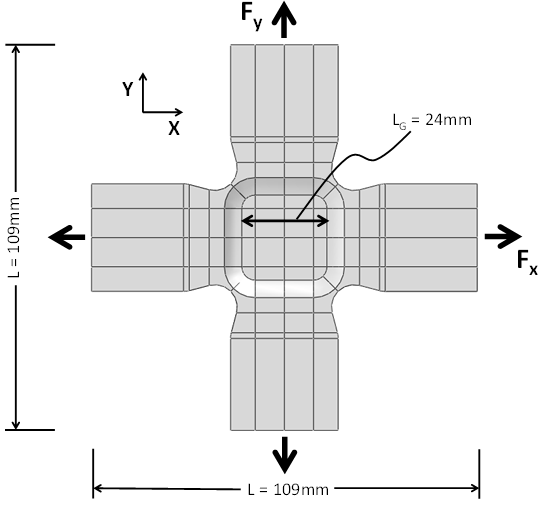
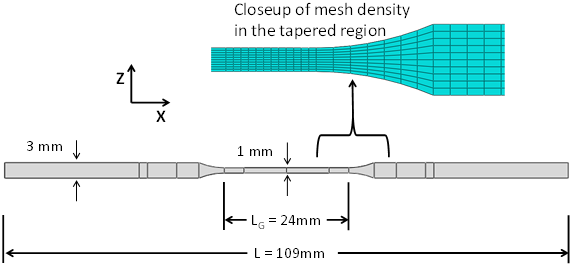
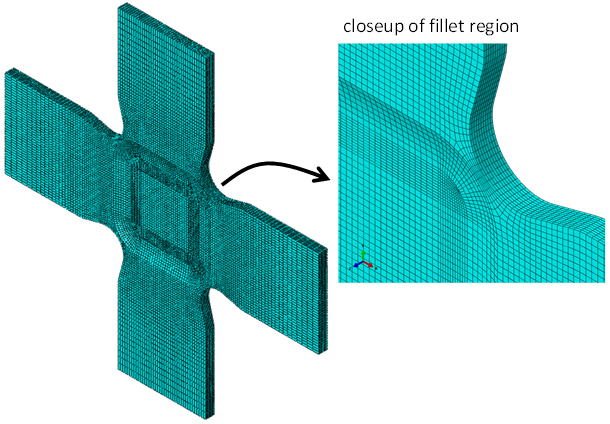
The finite element mesh was produced using 3-D solid hexahedral, 8-noded, reduced integration elements (C3D8R) in Abaqus/CAE. The plaque and the cruciform specimen are made with Extron 3019 HS, a 30% glass fiber-filled material.
The finite element model is designed to simulate five different Fx/Fy load ratios. The results of the simulations are compared with experimental test data performed on several biaxial cruciform specimens.
Load Cases
Five different loading scenarios were simulated for the biaxial cruciform. Five load cases (A, B, C, D, E) were compared with experimental test results.
- Load Case A - Only cross-flow loading (Fx > 0, Fy = 0)
- Load Case B - Fx/Fy = 2.3
- Load Case C - Fx/Fy = 1.2
- Load Case D - Fx/Fy = 0.6
- Load Case E - Only flow direction loading (Fx = 0, Fy > 0)
Results
The image below shows the simulated rupture loads for the five biaxial load ratios. The image also shows the experimental rupture loads for the cruciform specimens. The experimental results contain two or three replicates at each load ratio to demonstrate the amount of scatter inherent in the test data.
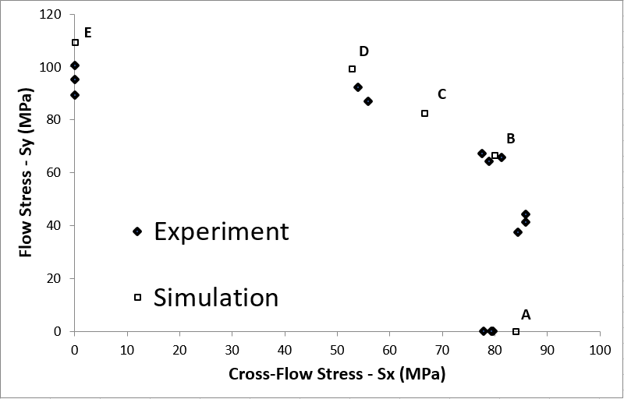
As seen above, the simulated biaxial failure envelope closely matches the size and shape of the experimental biaxial failure envelope.
The images below provide a comparison between the predicted and observed failure modes for load cases A through E.
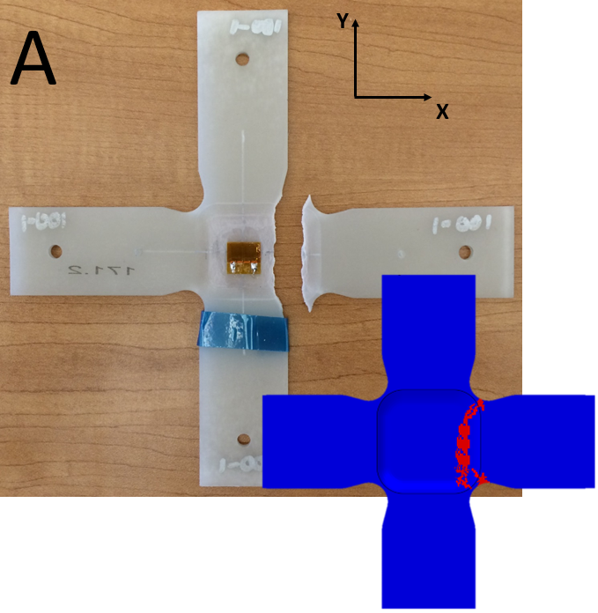
The model for Load Case A correctly predicts that the fracture surface runs from fillet to fillet.
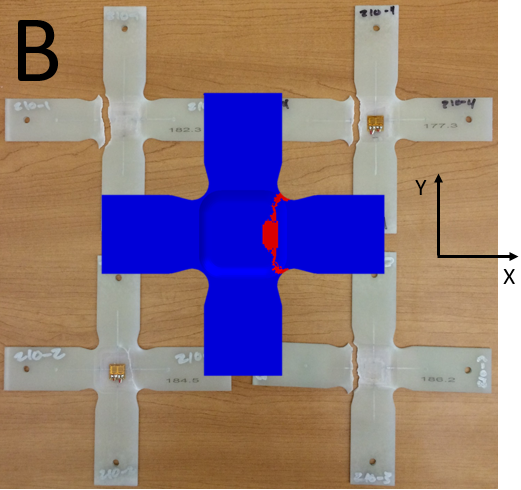
The model for Load Case B predicts a vertical fracture surface along the right arm of the cruciform that is opposite to the observed vertical failure on the left arm.
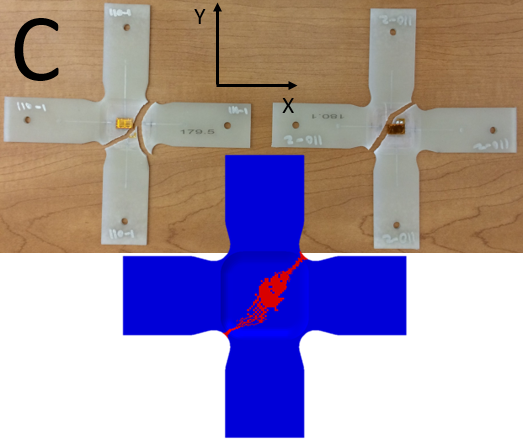
The model for Load Case C predicts a failure mode that runs diagonal from fillet to fillet.
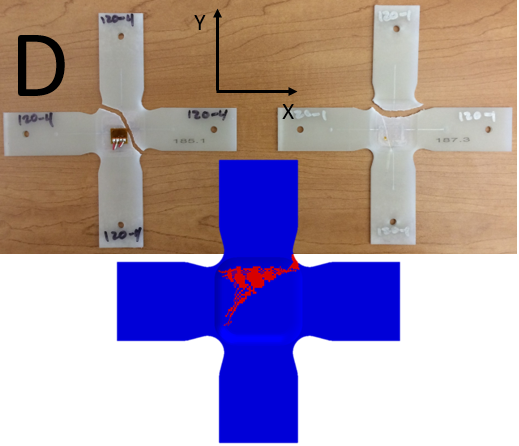
The model for Load Case D predicts a failure mode that shows aspects of the fracture patterns observed in both test specimens.
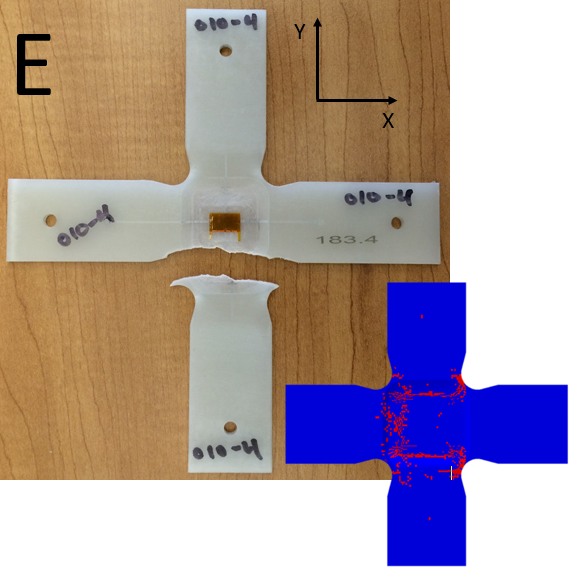
The model for Load Case E predicts failure across the gage section on the top, bottom, and left sides of the cruciform. The failure across the bottom of the gage section is similar to the observed failure in the physical specimen.
This series of successful validations is noteworthy considering the biaxial cruciforms present a number of challenges.
The cruciforms are subjected to a variety of load ratios that lead to complex stress states. These stress states are dominated by various combinations of in-plane stress components σxx, σyy, and σxy.
The cruciforms themselves are geometrically complex. They contain both in-plane and out-of-plane fillets that produce non-homogeneous stress and strain fields with moderate stress concentrations, regardless of the loading.
To highlight this non-homogeneous stress field, consider the plot of the von Mises stress for the uniaxial Load Case E.
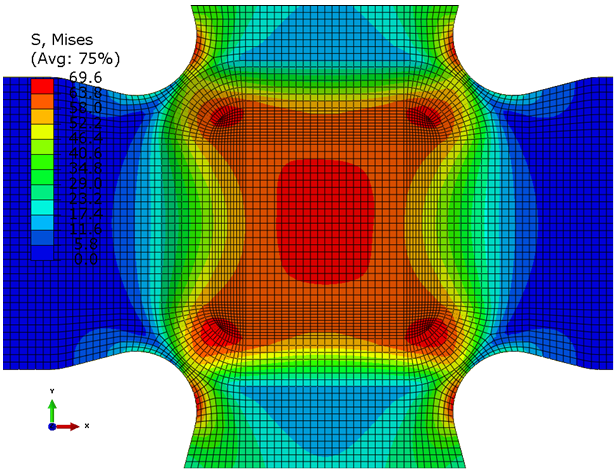
As we can see, the stress field is complex. It includes nine clearly identifiable local maxima. This contour plot also shows a predicted response that is perfectly symmetric since the loading and mesh are both symmetric. It is unlikely that this symmetry exists in the actual cruciform specimens. This may be responsible for the failure modes predicted for Load Case B above, in which the mode was correct, but the location was on the opposite side of the model.
Summary
This validation study demonstrates the validity of the multiscale, progressive failure, plasticity model used by Advanced Material Exchange. The results presented here have shown Advanced Material Exchange is able to accurately predict the rupture load and rupture mode for a complex geometry subjected to complex loading.
